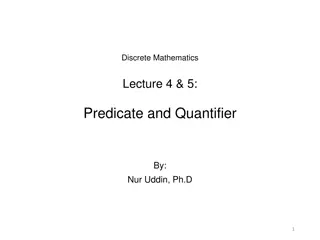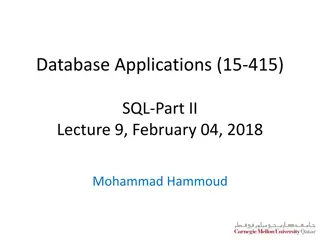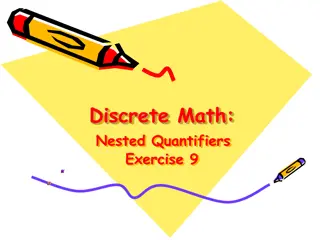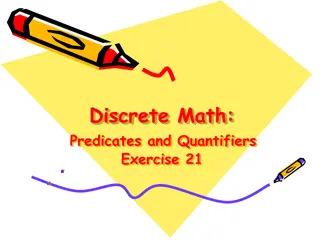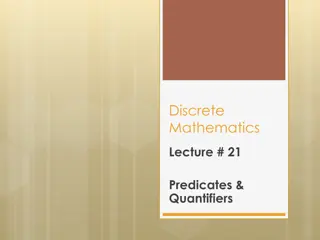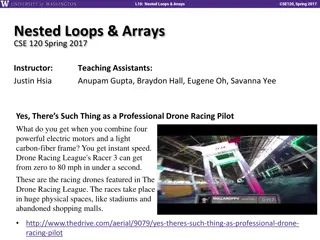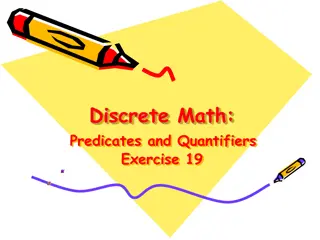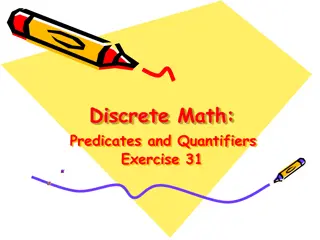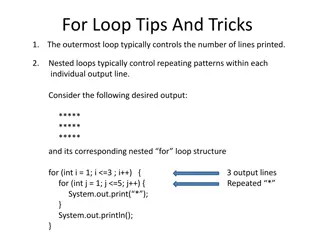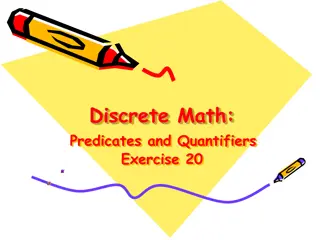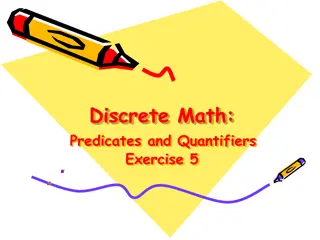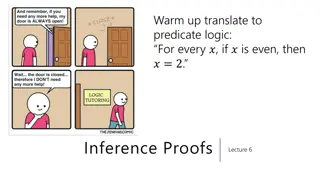Discrete Math Nested Quantifiers Exercise
Exercise involving nested quantifiers to express statements about students liking different cuisines at school, with solutions provided in simple English.
Download Presentation

Please find below an Image/Link to download the presentation.
The content on the website is provided AS IS for your information and personal use only. It may not be sold, licensed, or shared on other websites without obtaining consent from the author.If you encounter any issues during the download, it is possible that the publisher has removed the file from their server.
You are allowed to download the files provided on this website for personal or commercial use, subject to the condition that they are used lawfully. All files are the property of their respective owners.
The content on the website is provided AS IS for your information and personal use only. It may not be sold, licensed, or shared on other websites without obtaining consent from the author.
E N D
Presentation Transcript
Discrete Math: Nested Quantifiers Exercise 4
Exercise Let T(x,y) mean that student x likes cuisine y, where the domain for x consists of all students at your school and the domain for y consists of all cuisines. Express each of these statements by a simple English sentence. a) T(Abdallah Hussein,Japanese) b) x T(x,Korean) x T(x,Mexican) c) y (T(Monique Arsenault,y) T (Jay Johnson, y)) d) x z y((x =z) (T(x,y) T(z,y))) e) x z y(T(x,y) T(z,y)) f) x z y(T (x, y) T (z, y))
Solution a) b) Note that this is the conjunction of two separate quantified statements. Some student at your school likes Korean cuisine, and everyone at your school likes Mexican cuisine. Abdallah Hussein does not like Japanese cuisine. c) There is some cuisine that either Monique Arsenault or Jay Johnson likes. d) Formally this says that for every x and z, there exists a y such that if x and z are not equal, then it is not the case that both x and z like y. In simple English, this says that for every pair of distinct students at your school, there is some cuisine that at least one them does not like. e) There are two students at your school who have exactly the same tastes (i.e., they like exactly the same cuisines). f) For every pair of students at your school, there is some cuisine about which they have the same opinion (either they both like it or they both do not like it).
References Discrete Mathematics and Its Applications, McGraw-Hill; 7th edition (June 26, 2006). Kenneth Rosen Discrete Mathematics An Open Introduction, 2nd edition. Oscar Le in A Short Course in Discrete Mathematics, 01 Dec 2004, Edward Bender & S. Gill Williamson
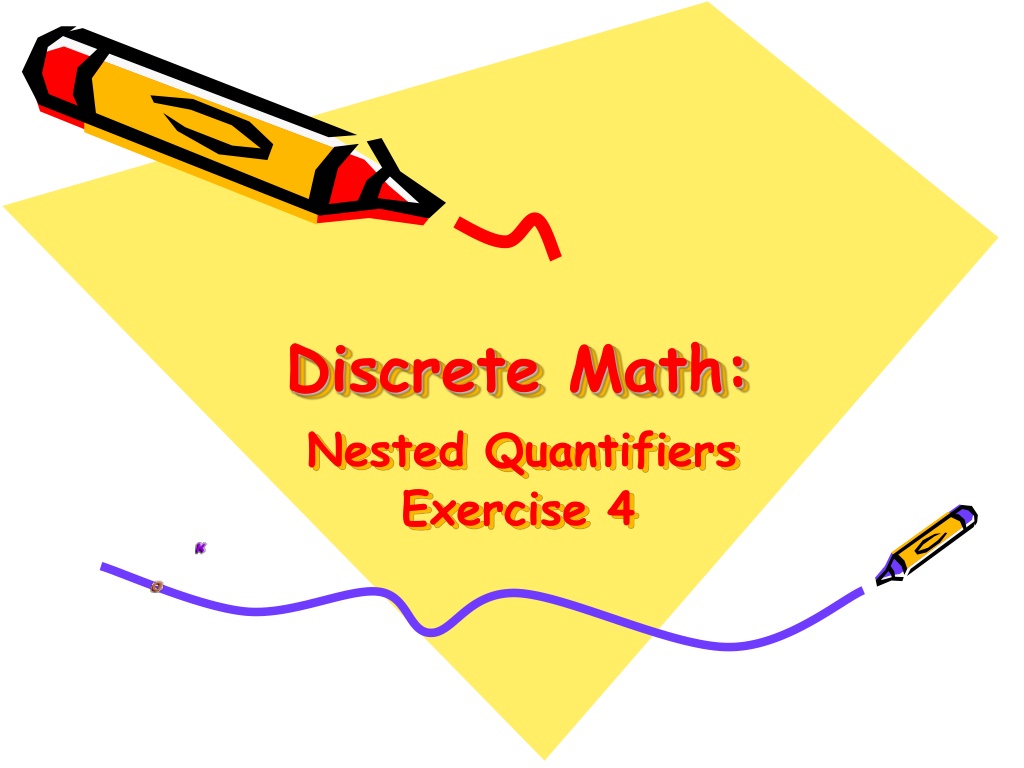
 undefined
undefined











